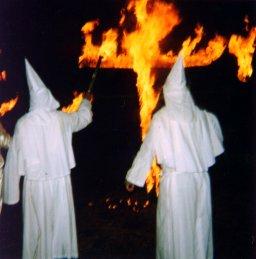Michael Fumento
Factual · Powerful · Original · Iconoclastic
The Great Black Church-burning Hoax
January 01, 1998 · Michael Fumento · RacismResponding to the reported wave of southern black church burnings, President Clinton proclaimed that "Racial hostility is the driving force" behind the church burnings and said, "I want to ask every citizen in America to say we . . . we are not slipping back to those dark days."
Okay, Mr. President, I’ll say it.
I’ll say it because this "epidemic of hatred" is a fraud. A myth. A deliberate hoax. There is no good evidence of any increase in black church burnings. There is, however, evidence, that a single activist group has taken the media and the nation on a wild ride.
It turns out there is no good federal data on black church arsons. The FBI doesn’t keep such statistics, and the Department of Justice doesn’t usually break them down by white and black churches or arson and accidents. The Bureau of Alcohol, Tobacco and Firearms only tracks federal fires and those it’s specifically asked to investigate.
A private group, the National Fire Protection Association, keeps careful track of church arsons. While their data don’t break down churches by race, they do show a dramatic drop in the number of church arsons, from 1,420 in 1980 to 520 in 1994.
Though arson committed against any house of worship is especially heinous, it should be reassuring to know there have been far fewer recently than there used to be.
So who is giving out these data suggesting it’s open season on black churches? It turns out the main source — indeed, the one which started the whole thing — is far from impartial. It is the Atlanta-based Center for Democratic Renewal, whose self-proclaimed mission is to work "with progressive activists and organizations to build a movement to counter right-wing rhetoric and public policy initiatives."
Originally called the National Anti-Klan Network, it changed its name when the Klan virtually fell apart in the 1980s. But far from seeing that as a sign of declining bigotry, it has continued for more than a decade to issue statements and reports "discovering" a sudden resurgence in racist activity.
The CDR’s agenda goes well beyond rooting out genuine bigotry; the group tars mainstream conservatives with the same brush as racist criminals. The Rev. C.T. Vivian, chairman of the CDR board said, "There’s only a slippery slope between conservative religious persons and those that are really doing the burning."
In late March, the CDR held a press conference and released a preliminary report showing a tremendous surge in black church arsons from 1990 to the present. From there it’s been a media snowball, with over 2,200 stories written on the subject to date — including three huge consecutive layouts in USA Today.
"You’re talking about a well-organized white-supremacist movement," the Rev. Mac Charles Jones, a CDR board member told one paper. "This is domestic terrorism," he told CNN.
But after numerous law enforcement agencies concluded there didn’t seem to be any contact between those arsonists who had been arrested, others have blamed, as Jesse Jackson put it, "a cultural conspiracy." The "ringleaders" are everyone from talk radio hosts to Supreme Court Justice Clarence Thomas to the religious right.
Mary Frances Berry, chairwoman of the U.S. Commission on Civil Rights, said the Christian Coalition "created the context for the fires."
The CDR report claims there have been 90 arsons against black churches in nine southern states since 1990, with the number rising every year up to 35 in 1996 as of June 18. Each culprit "arrested and/or detained," it stresses, has been white.
But when I contacted the law enforcement officials of several states on the CDR list, a very different picture emerged. The CDR, it turned out, regularly ignored fires set by blacks and those that occurred in the early part of the decade, and labeled fires as arsons that were not — all in an apparent effort to make black church torchings appear to be an escalating phenomenon.

For example CDR lists ten churches allegedly torched in Alabama, but State Fire Marshall John Robison says that only one of these was a confirmed arson. All the others were accidental, undetermined, or weren’t fires at all but vandalisms.
CDR somehow managed to omit three bonafide black church arsons that took place in Alabama in 1994. In two cases the culprits were black. Moreover, the group left out ten black church arsons that took place before 1994, creating the illusion that the burning of black churches is a recent phenomenon.
Even the claim that black churches have been singled out for arson is questionable. In 1995, according to USA Today, there were 45 arsons against white churches and 27 against black ones in the surveyed states.
Other than saying that some black churches over the years have fallen prey to racists, we can’t easily infer motives. "We have not uncovered in [Alabama’s] 38 cases a single piece of information to substantiate racially-motivated fires," said Robison. Further, "There have been no dramatic increases, except for this year because of the media hype." Other states’ officials have told him the same.
Here lies the ultimate irony. By claiming there has been an epidemic of black church burnings, it appears that in recent months they have actually caused one. They have also fomented tremendous racial division and caused great fear among southern black churchgoers. That which the Ku Klux Klan can no longer do, a group established to fight the Klan has done for them.
